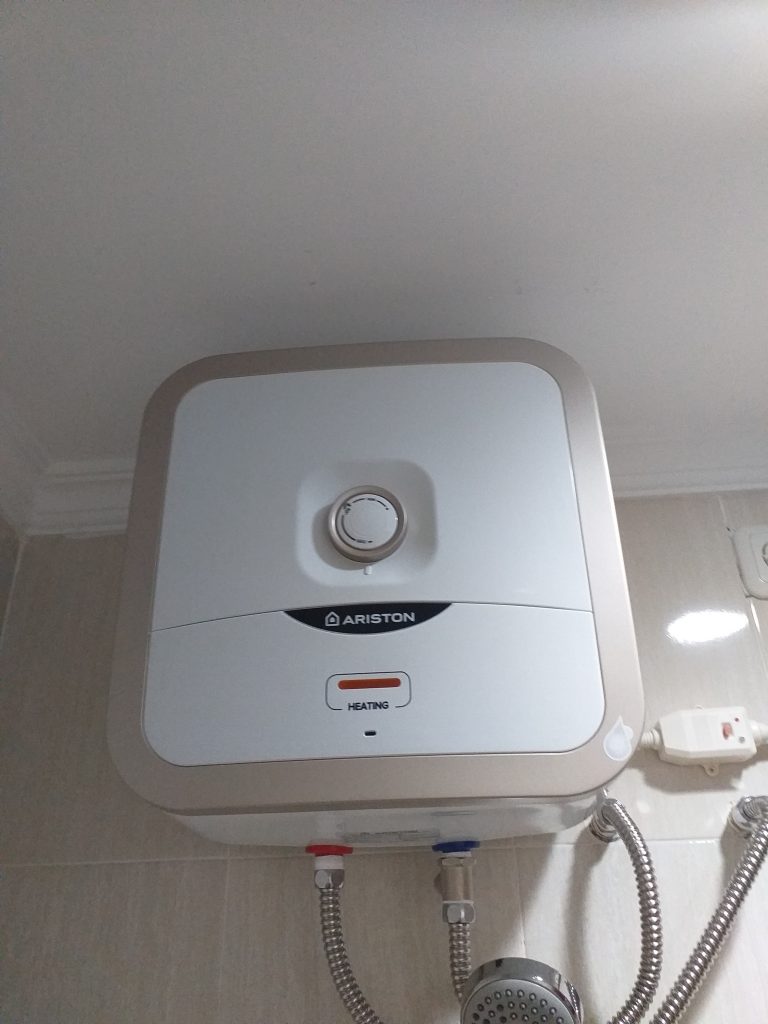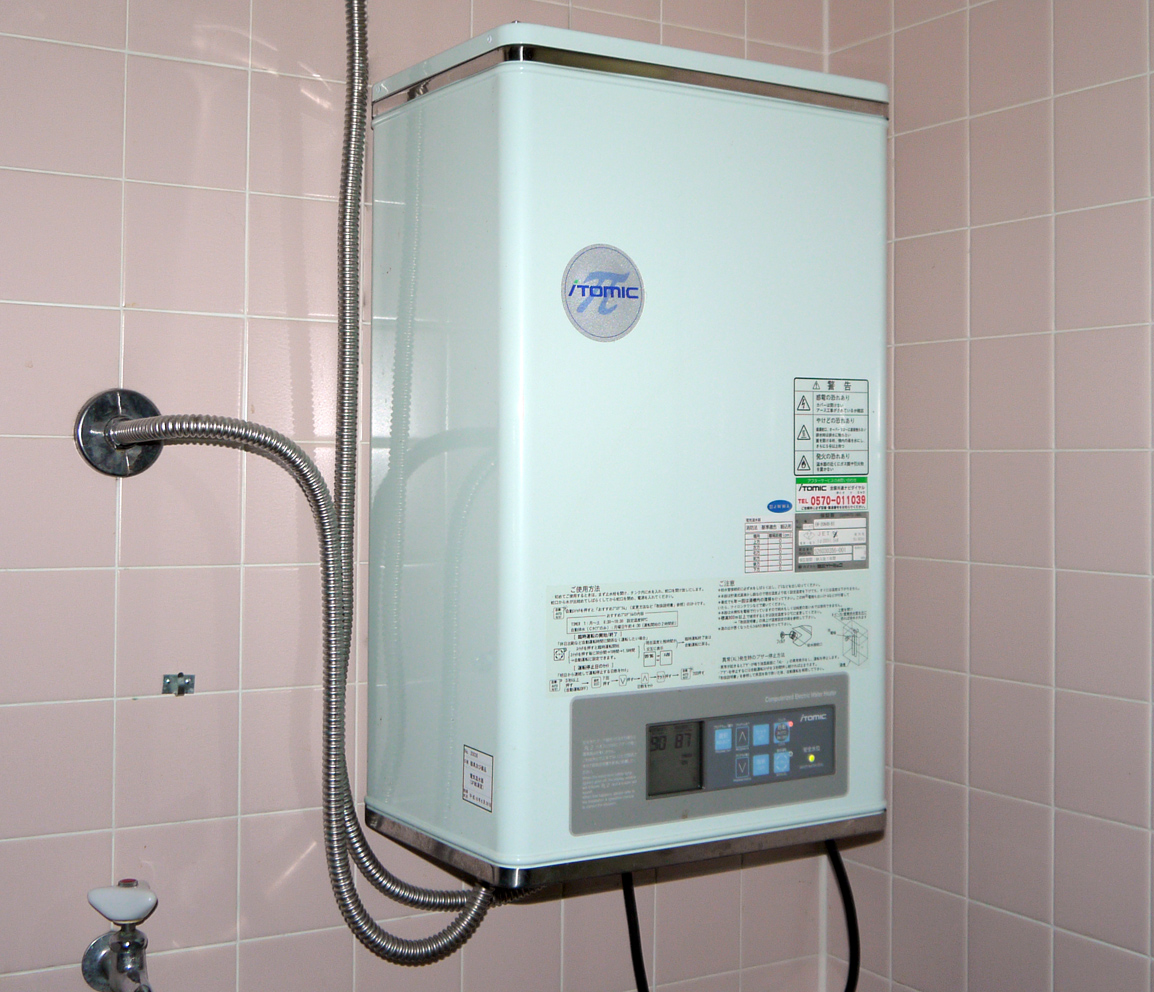Summary
– Composition of the electric instantaneous water heater
– Operating principle of the electric instantaneous water heater
– Purchasing an instantaneous electric water heater
The electric instantaneous water heater is a device that produces domestic hot water on demand without first storing it in a tank. This concept seems attractive because it dispenses with the need to anticipate needs and saves long and energy-consuming heating hours.
What exactly is it? Should this reasoning be weighed up? The point now.
Composition of the instant electric water heater
The electric instant water heater is covered with a lacquered jacket, protecting:
– the cold water inlet connection;
– the vacuum switch;
– the heating element (in which the electric resistance is inserted);
– the water flow control device;
– the hydraulic safety valve;
– the hot water outlet connection.
Operating principle of the electric instantaneous water heater

The electric instantaneous water heater does not heat the water in a storage tank. Still, it uses a high-powered electric resistance to heat, by contact, the water flowing through the heater body.
Let’s describe the operation of this device:
– The opening of a hot water tap creates a vacuum in the heating element;
– the vacuum switch makes contact;
– the resistance quickly rises in temperature;
– the water is charged with calories in contact with the resistor as it passes through the heating element to reach the nominal temperature;
– the flow rate stabilizes to maintain the intended outlet temperature;
– the hot water flows to the faucet.
Note: It takes a few seconds for the resistor to reach its maximum temperature and for the water to flow through the heater. The waiting time is mostly dependent on the distance between the water heater and the tap point.
Temperatures and hot water flow rates proportional to the power of the electric heater
Each resistor is power-calibrated to raise the water temperature by a given value for a given flow rate.
Examples of average flow rates for an incoming water temperature of 15°C:
|
Outlet temperature |
Resistance 4.5 kW |
Resistance 5.5 kW |
Resistance 7.3 kW |
|
40°C |
2,4 litres/minute |
2,9 litres/minute |
4,0 litres/minute |
|
45°C |
2,0 litres/minute |
2,5 litres/minute |
3,2 litres/minute |
|
50°C |
1,8 litres/minute |
2,0 litres/minute |
2,9 litres/minute |
|
55°C |
1,5 litres/minute |
1,9 litres/minute |
2,6 litres/minute |
Note: If the inlet water temperature decreases, the outlet temperature or flow rate will decrease accordingly. For a 7.3 kW heater, incoming water at only 10°C will deliver 4 liters/minute of water at only 35°C or only 3.2 liters/minute of water at 45°C, and so on.
Instantaneous electric water heater: purchase
Advantages of an instant electric water heater
This type of water heater is ideal:
– To supply an off-center water point,
◦ because of the low installation constraints;
◦ to reduce water wasting waiting times.
– For occasional use, which does not require a large flow rate. Only the water necessary for the needs is heated. The energy savings are indisputable.
– To forget (or almost) the problems caused by scale and bacteria (especially legionellosis).
– For its reduced dimensions, which can save storage space in small dwellings.
– For its reliability and the low maintenance it requires.
– For its ease of installation, within reach of a good handyman (no burnt gas evacuation).
Disadvantages of an electric instantaneous water heater
Among the significant constraints and drawbacks, we should mention:
– The quantity of water available is unlimited, but how much is it going to cost? Considering that electricity is at its maximum price during the day, what type of flows are you going to choose?
◦ With a washbasin requiring a flow of 2 to 4 l/mn, a shower of 4 to 8 l/mn, and a bath of 8 to 10 l/mn, a 7.3 kW water heater is barely sufficient for a shower. To avoid cold showers, a low-flow showerhead is needed, and do not open another tap simultaneously, even one with a flow limiter nozzle.
◦ To supply more than one water point, you must significantly increase the water heater’s power or multiply the number of water points. In both cases, the extra cost is significant, both in installation and operation.
– The 7,300 W water heater alone requires a 32 A meter:
◦ increase the power of the existing meter, or even replace it;
◦ large cross-section electrical cables.
Note: in both cases, additional installation cost + higher subscription fee + increased energy consumption.
– Not suitable for large families or communities, except for a remote hot water station.
– Random temperature stability, except for models with electronic management.
Good to know: the range of electric instantaneous water heaters ranges from 2.00 to 30 KW.
Prices of instant electric water heaters
It is necessary to take into account the 2 inseparable criteria:
– Price of the supply, variable according to the power and the brand:
◦ single-phase water heater from 2.0 to 4.5 kW: between $130 and $250 including tax;
◦ single-phase water heater from 5.5 to 6.5 kW: between $130 and $300;
◦ for a 7.3 to 30 kW water heater: between $80 and $450; ◦ for a 7.3 to 30 kW water heater: between $80 and $450.
– Amount of ancillary and installation work:
◦ not significant if the room, the electrical installation, and the hydraulic configuration conform;
◦ very heavy if the ancillary work (electricity + plumbing) is essential. This can be the case, in particular, for resistors of more than 10 kW.
More than ever, it is essential to have several estimates drawn up by competent professionals. No investment aid or tax reduction to be expected for this type of installation.
Good to know: above 10 kW, a three-phase power supply is frequently required.
You can read more here:

